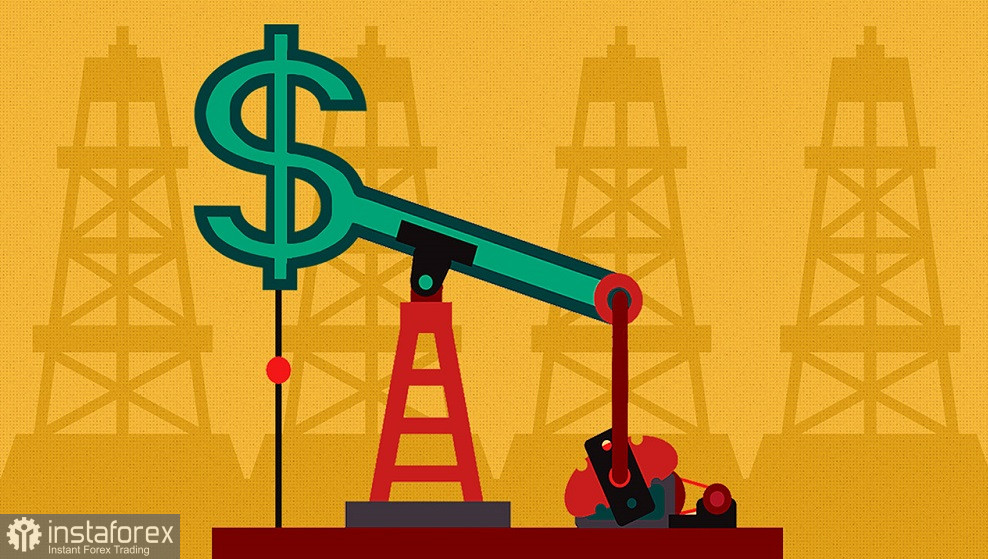The euro-dollar pair continues to demonstrate a bearish sentiment, steadily developing a downward trend. The price has been actively declining for six consecutive weeks, but at the end of August, traders found themselves within the range of the 8-figure mark. Buyers initiated a counterattack towards the 1.0960 level, but this blitzkrieg quickly failed as the initiative shifted back to the sellers. Thanks to increased risk-off sentiment (with concerns mainly revolving around the Chinese economy), bears updated a three-month price low and settled within the 7-figure range. Meanwhile, the dollar continues to gain momentum, allowing EUR/USD sellers to explore new price horizons. For instance, yesterday, they attempted to breach the 1.0700 level, conducting something of a reconnaissance in force. However, the 6-figure mark proved to be a tough nut to crack—at least, yesterday's downward blitzkrieg failed successfully.
However, in this case, the upward pullback is a tactical retreat rather than a strategic failure. The downward trend remains intact, while the current correction (which, by the way, is relatively modest) is driven by increased interest in risky assets. The yield on 10-year Treasuries has decreased (interrupting a four-day upward trend), dragging down the American currency.

Can we trust the upward pullbacks in the current circumstances? In my opinion—no. Long positions are currently contraindicated. Throughout the week, buyers have regularly attempted to develop a corrective rise but without success. The pair has risen by just a few dozen points at most and then reversed sharply downward. In such conditions, considering long positions is not advisable.
The safe-haven dollar continues to enjoy increased demand amid rising oil prices and hawkish expectations regarding the Federal Reserve's future actions. Additionally, investors continue to worry about the fate of the Chinese economy, which has recently been showing disappointing results. This information backdrop has led to a mostly negative performance in the U.S. stock market, led by technology stocks.
Overall, from a fundamental perspective, a domino effect has occurred in the markets: after the news of Saudi Arabia and Russia extending the oil supply cuts until the end of the year, traders have become increasingly concerned (quite justifiably) about the cost of energy resources and, consequently, inflation acceleration in the U.S. This has been followed by verbal speculations about the Federal Reserve's potential actions this year. Traders are soberly assessing the prospects of the September meeting, with the probability of a rate hike this month standing at a mere 7% (according to the CME FedWatch Tool). In contrast, the chances of a 25-point scenario in November have risen to nearly 50%. If August inflation figures in the U.S. land in the "green zone" (particularly the core Consumer Price Index and the core Personal Consumption Expenditures index), this probability could increase to 70-80%.
Furthermore, the recent macroeconomic reports published in the United States contribute to a hawkish sentiment. For instance, the production volume in the American service sector, which constitutes more than two-thirds of the U.S. economy, unexpectedly accelerated, reaching a six-month high: the ISM Business Activity Index in the services sector for August stood at 54.5 points (compared to a growth forecast of 52 points) – the best result since February of this year. Additionally, production expenses paid by these companies have also increased. The previously published ISM Manufacturing Index also remained in the green zone, rising to 47.6 (the best result since February).
Interest in the dollar is further fueled by another factor: according to some experts, "black gold" will continue to rise in the coming months. In particular, as analysts at RBC Capital Markets believe, by the end of this year, the price of Brent crude oil will test the $100 per barrel mark. According to several other experts, Brent quotes could settle above $100 per barrel as early as December.
It is worth noting that inflation in the United States began to rear its head back in July, so if the above-mentioned forecasts materialize, the Federal Reserve will have to swiftly contain the situation, playing catch-up. By the end of the week, Brent prices started to decline from their 10-month highs (this fact, incidentally, played an indirect role in today's decline of EUR/USD), but this appears to be a correction. At least, Goldman Sachs strategists are confident in this: in their view, if Russia and Saudi Arabia do not abandon significant supply cuts, Brent could rise to $107 per barrel.
Thus, the established fundamental backdrop supports further declines in EUR/USD. Long positions in such conditions are too risky, even in the context of a corrective rebound. However, rushing with sales is not advisable at the moment either, as the pair is trading at current price lows (near the 7-figure mark). In my opinion, it would be advisable for sellers to consider their options after breaking below the 1.0700 support level (the lower Bollinger Bands line on the D1 timeframe). In that case, the next target for the downward movement will be the 1.0620 target – which is also the lower Bollinger Bands line, but on the W1 timeframe.





















